We were tasked to analyse the key elements of film form of the “Wedding sequence” of Wild Tales (01:25:10-end). This involved a detailed analysis of cinematography, sound, mise-en-scène, editing and performance during this sequence.
Cinematography
The tale begins with a projected closeup image of a young Romina, establishing a centrally positioned frame within a frame. The camera then pulls out to reveal a slideshow of images being played in a luxurious wedding reception. Afterwards, we cut to a two shot of a couple at a table, displaying the light-heartedness of the event. The camera then crabs right in order to display a multitude of well-dressed guests which reinforces the opulence of the wedding reception.
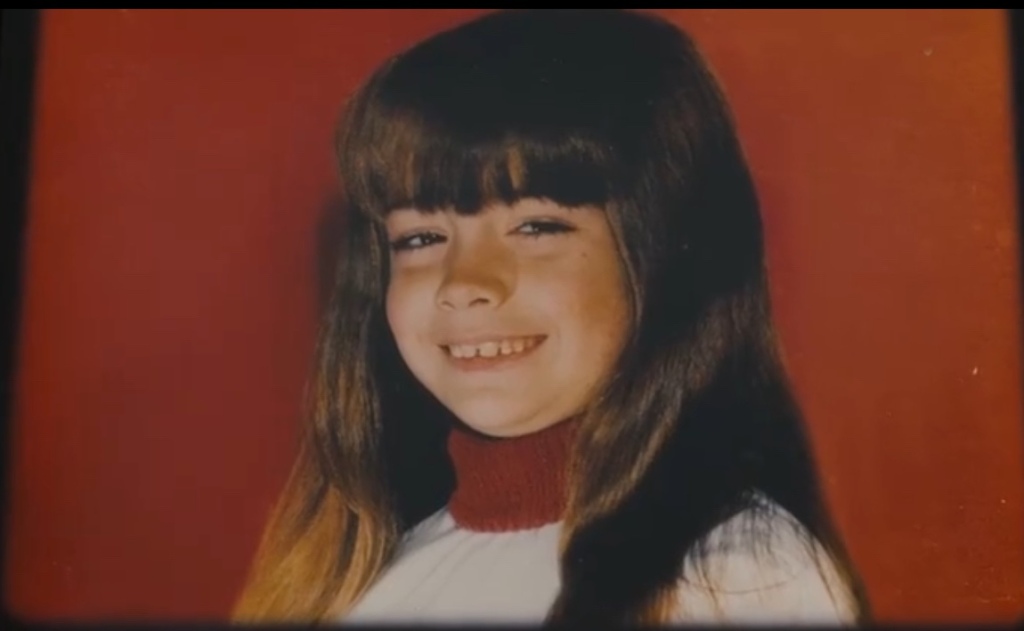
A proceeding long shot displays the vast room, exhibiting the luxuriant chandeliers and other grandiose decor. We proceed to cut to various shots of the many guests enjoying themselves. As we cut to a long shot of the DJ, a handheld camera is employed in order to fluidly arc through the smoke to reposition the frame. Through this, the viewer is brought in closer to a newly-created theatrical entryway for the couple to arrive through.
A single shot is used to track the movements of the couple backwards, establishing them as the centre of attention. In addition to this, the camera begins to joyfully glide as the couple begins to dance. Throughout this, Romina is centrally framed which reinforces her as the protagonist of this tale. During the dance sequence, there are closeups of the instruments such as the tuba to emphasises the jovial atmosphere of the wedding. Alongside this, the use of multiple cameras emphasises the artificiality of the event. After an abrupt jump cut, the next shot of the guests is framed like a photo to reinforce the superficiality of the wedding.
As Romina begins to notice someone in the reception that she doesn’t know, the camera pushes into Romina’s changing expression to display her confusion. In response to this, the camera proceeds to zoom in to the unknown woman. This uncommon technique is aptly utilised in order to divert the viewer’s attention towards her. Romina then becomes isolated in frame as the lighting is harshly distributed upon her, which is reflective of her uncertain state of mind. To further reinforce this, the camera then follows Romina and comes to rest on a mirror shot which implies that she is questioning her own identity.
Szifron then implements two focus pulls from Romina to the young woman (Lourdes) as she answers her phone, which appropriately focuses the viewer’s attention. The camera then arcs into an over-the-shoulder shot in order to face Lourdes. Through this, another pair of focus pulls are employed to display Lourdes answering her phone for the second time from both perspectives. We then cut back to a low-angle shot of a centrally-framed Romina which portrays her as imposing.
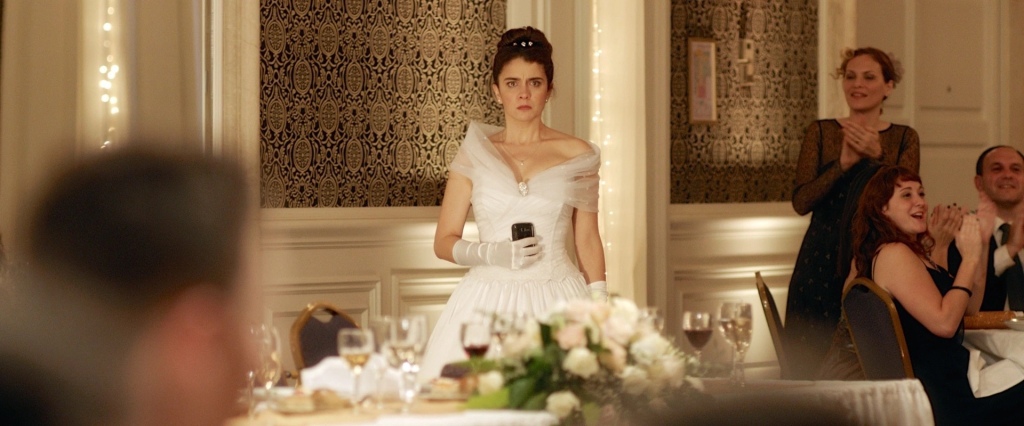
As Ariel and Romina begin to dance, the camera remains tightly focused on the couple in order to keep the viewer’s attention focused exclusively on the couple. The depth of field is extremely shallow to reinforce this. A sequence of shot/reverse shots occur as the couple converse, however the shots are not synchronised to the dialogue. Instead, we see the respective reactions of the two rather than the speech which appropriately informs the viewer of the couple’s state of minds. After the heated conversation concludes, a Dutch angle is used to display Romina angrily storming off. This signifies her world falling apart after learning that Ariel has cheated on her.
Following this, there is a POV shot from Ariel’s perspective which displays an array of distraught guests. As he opens the door to the kitchen, the camera is fastened to the door which positions the viewer in a disorienting position. A low-angle shot tracks Romina, underlying her anxiety. This is reinforced when we cut to an unflattering angle of Romina, displaying her from a frontal low angle which exemplifies her raw emotions. As Ariel pursues her, he is filmed with a handheld camera to illustrate his distress.

As Romina reaches the top of the building, a birds-eye-view shot displays the colossal height of the building. Through this, the viewer is teased of the possibility of her jumping off as she leans over the edge. Another shallow depth of field is implemented during this scene to draw the viewer’s focus onto Romina alone. As the conversation between the chef and Romina ensues, a long shot is used to allow the chef to deliver his advice. There is also stark juxtaposition between the typical romantic lighting of the setting and the hectic events taking place.

As we re-enter the ballroom, the camera movements become increasingly shaky to emphasises the chaotic atmosphere. The lighting is also extremely harsh which juxtaposes the previously established opulence of the reception. A low-angle shot depicts Romina striding towards the camera which informs us that she has regained the upper hand. Alongside this, a wide shot demonstrates the chef’s humiliation as word begins to spread. A multitude of Dutch angle tracking shots are implemented to illustrate the discombobulating chaos that is occurring.
Romina then grabs Lourdes and the two begin to rapidly spin in circles. To convey the dizziness to the viewer, a camera rig is attached to the pair’s backs which is reflective of the tumultuous mood of the wedding. As Lourdes crashes into the mirror a low-angle shot depicts the aftermath, followed by a two shot of Ariel’s parents. At this point, the previously used Steadicam is replaced with an unsteady handheld camera, which proceeds to move around the room and come to rest on Lourdes. Finally, as Ariel confronts Romina, a series of two shots creates a sense of desperation as opposed to the prior romantic tone.
Sound
The tale begins with the implementation of the diegetic compiled score Titanium by David Guetta. The apt use of this upbeat pop song lightens the mood of the wedding and persistently pulsates throughout the reception. The song is representative of strength and overcoming hardships which foreshadows the extremely ironic events of the wedding. The scene is directed with the specific song choice in mind due to the meticulous synchronisation between the action on screen and the phrasing of the song. For example, as the bridge of the song is reached, the guests are waiting in anticipation for the couple to enter through the theatrical red curtain.
Titanium is then interrupted by an ensemble playing traditionally Argentine upbeat music to accompany the dancing. As the lively energy of the reception increases, the diegetic composed score appropriately accompanies the atmosphere. Afterwards, as Romina attempts to phone Lourdes, the ringing phone enters the mix. Alongside this, we see the conversation from Romina’s perspective but hear the diegetic dialogue as if we were close to Lourdes. Romina’s breathing gradually rises in the mix as she realises what her husband has done.
As the newlywed couple begins to dance, The Blue Danube begins to play which is reminiscent of a traditional wedding atmosphere. This specific piece is also present in the likes of Kubrick’s 2001: A Space Odyssey, this ominous connection potentially creates a feeling of unease within the viewer. This romantic score ironically juxtaposes Romina’s chaotic state of mind. Additionally, the score rises in the mix as the couple touches hands which heightens the tension.
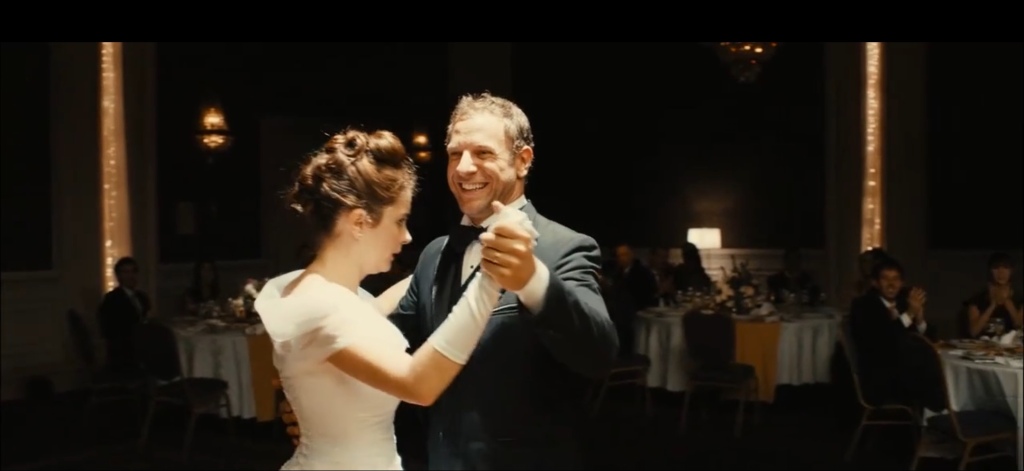
During the rooftop scene with Romina and the chef, the muted city ambience can be heard during the pensive conversation between the two. In stark juxtaposition, the dynamic diegetic sounds of lighting and wind loudly enters the mix as Romina unleashes her anger upon Ariel.
A dramatic score is layered in the mix as Romina storms back into the reception, reflecting her exasperated state of mind. The sound also becomes exclusively diegetic to accentuate the emotion of the poignant scenes later on. Finally, a theatrical ‘gunshot-like’ sound play as Ariel opens the champagne bottle which teases the viewer into believing a gun has been fired until the bottle is revealed.
Mise-en-scène
During the initial projected closeup of young Romina, the background of the image is red – signifying the later danger and peril of the wedding. A variety of luxurious objects reinforce the opulence of the wedding, including the flashing lights and smoke machines. A number of large, golden chandeliers as well as an array of disco balls reinforce the superficial happiness and extravagance the wedding purports.
The bride and groom enter the reception from behind a theatrical red curtain, suggesting that their relationship is merely a façade. Romina sports a stereotypically designed white wedding dress and veil, implying Romina’s current purity. Romina’s hair is also meticulously immaculate – both of which become increasingly unkempt as the intensity of the situation increases. Ariel’s appearance is relatively scruffy, being unshaven which implies that the wedding is unimportant to him.
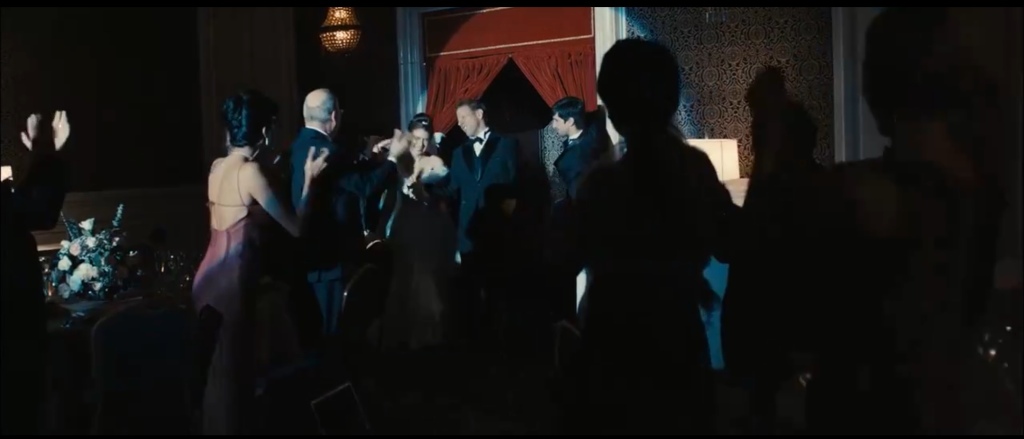
Lourdes wears a black dress and has a star tattoo. Her distinctive appearance hints to the viewer that she holds a great deal of importance to the story. Her black dress attributes a sense of elegance and prestigiousness to her character. As Romina runs away from the reception, her appearance is extremely disheveled and her makeup is ruined, reinforcing the chaotic havoc of the wedding
As Ariel runs up the stairs to pursue Romina, the walls are illuminated with green lighting which is symbolic of Romina’s jealousy. During the rooftop scene, the narrative device of pathetic fallacy is utilised, incorporating thunder and lightning into the setting which is reflective of Romina’s irate feelings towards Ariel.
As Romina throws Lourdes into the mirror, the appearance of smashed mirror heightens the utter pandemonium of the wedding. At this point, Romina is at her most disheveled – her appearance is fully unhinged which reinforces that this is the peak of turmoil. The blood on her dress suggests that her prior purity is abolished. The initial opulent atmosphere is contrasted by a multitude of unkempt guests and broken glass.

During the final moments of the tale, Romina attempts to enact the motions of a traditional Argentine wedding ceremony. However, there is a sense of hollowness and superficiality as the rings are pulled from the wedding cake, suggesting that Romina can never return to normality. Finally Romina removes her hair extension, which is representative of her final stage of degeneration.
Editing
The initial slideshow of the wedding is cut to the beat of Titanium, suggesting that the wedding has been meticulously planned beforehand. An example of parallel editing is incorporated between Ariel and Romina as they separate to join their respective friends and families, reinforcing their distant relationship. To further accentuate this, the couple face opposing directions between the parallel edits.
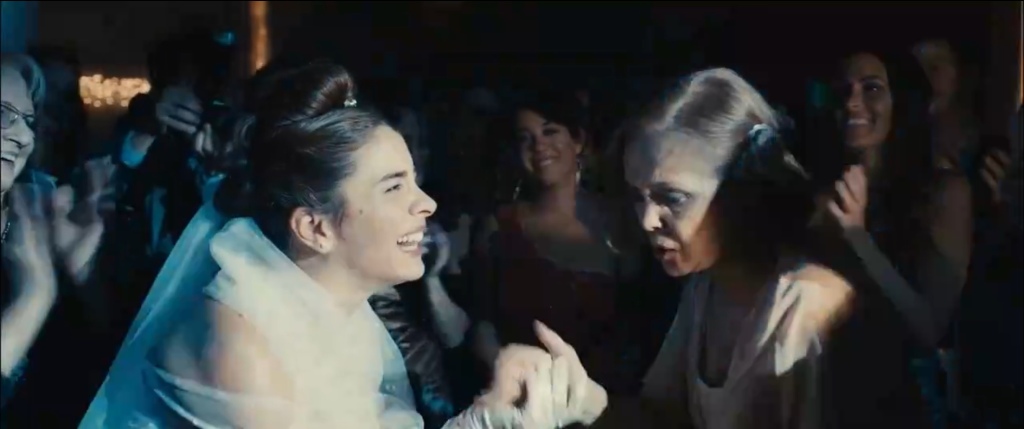
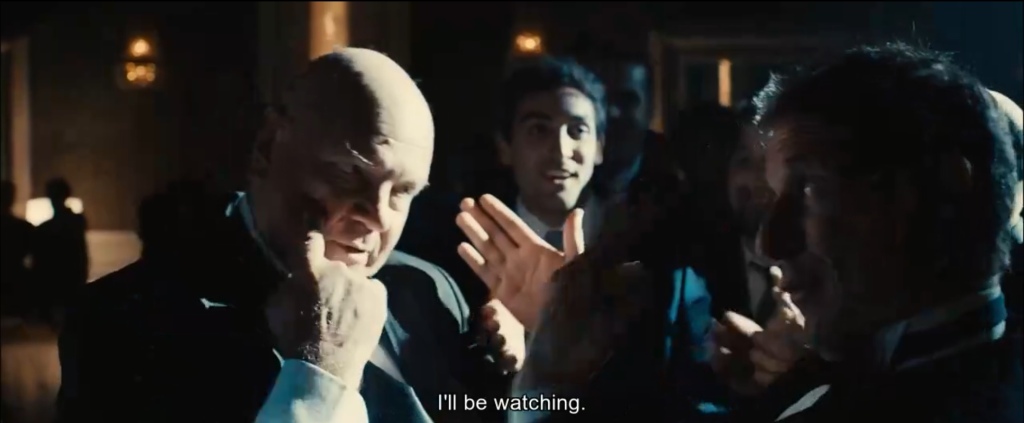
The pace of editing quickens as the excitement builds and the chorus of the song is reached with more frequent cuts being implemented throughout. A wide variety of cameras are used to reinforce the superficiality of the wedding. A fake camera interface is placed over the screen, alongside the utilisation of a lower quality film stock to purport a sense of authenticity.
A pair of jump cuts are used to display the passage of time between the Titanium sequence and the traditional Argentine ensemble, as well as to the photograph being taken afterwards. As the confrontation between the couple occurs, we spend a longer amount of time focused on Romina than Ariel, which positions the viewer to empathise with her to a higher degree. Romina then runs away from the scene, during which the sound of door closing aptly matches the cadence of the score. Another example of parallel editing is used as the couple separate.
The pace of editing slows as the chef offers his advice to Romina, the only cuts are part of a shot/reverse shot sequence between the pair. During Ariel’s pursuit, there is a glance object between him and Romina’s lone shoe which appropriately focuses the viewer’s attention towards it. As Romina unleashes her anger upon Ariel, the edit alternates between an over-the-shoulder shot which displays Romina’s full figure, a three-quarter closeup of Romina as well as a reactionary shot of Ariel. As we re-enter the reception, Szifron cross cuts to portray Romina’s enjoyment of the party and Ariel’s discontentment. Finally, another example of cross cutting is implemented to display a passage of time after the mirror is smashed.
Performance
As the couple initially enters the reception, they appear to be superficially happy. Both put on an extremely over-zealous performance by smiling and waving at each guest they pass by without looking at each other. This suggests and foreshadows their infidelity towards one another. Each of the guests are smiling and make friendly gestures towards each other, establishing an uncomfortably positive atmosphere.
During the dance floor scene, the guests conform to stereotypical gender roles. The groups of women scream while the men act boisterously. As we see the setting from the camera’s perspective, Ariel looks directly at the camera which emphasises his artificial demeanour.
As we cut to the scene of the photo being taken, each of the guests smile ostensibly which suggests that no one truly wants to be there. Alongside this, Romina also fakes a smile as she converses with one of the guests, clearly demonstrating her disinterest towards the conversation. The topic of Facebook is often mentioned throughout the conversation, reinforcing the theme of superficiality presented throughout the tale. In response to this, the woman attempts to initiate a conflict by sowing the seed of jealousy within Romina by making subtle reference to the many other guests in the reception.

As Romina scrutinises Lourdes’ behaviour, Ariel leans over the young woman and addresses her flirtatiously which foreshadows their secret relationship to the viewer. During Romina’s scheme to discern Lourdes’ identity, she briefly assesses herself in the mirror. This suggests to the viewer that Romina is questioning her own identity. After she learns the truth, Romina resorts to alcohol as a coping mechanism to recover from her distraught state of mind. During the confrontation between the couple as they dance, Ariel’s eyes dart around the room which emphasises to the viewer that he is still attempting to maintain his untarnished persona.
During the roof scene, Romina’s voice begins to tremble as she confides within the cook which informs the viewer of her vulnerability. In stark juxtaposition, Romina unleashes the full force of her anger upon Ariel, who reacts by throwing up. This emphasises his utter shock and disgust towards the situation.
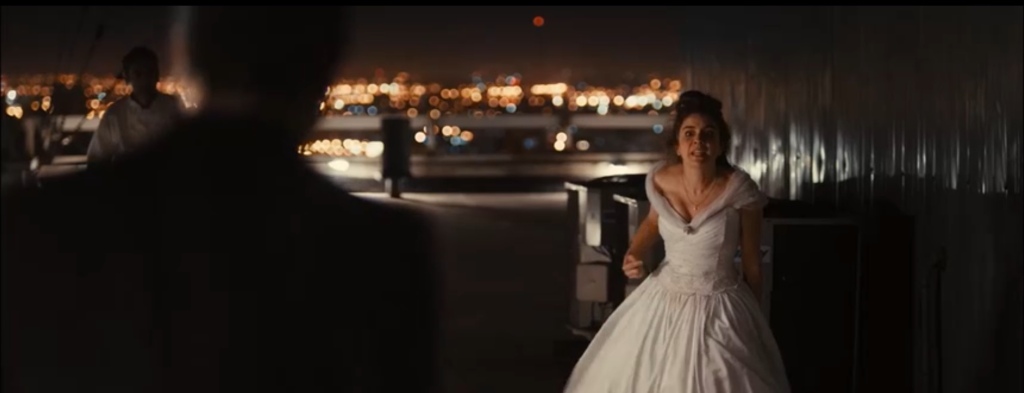
As she re-enters the ballroom, Romina remains artificially calm in order to maintain her façade. She addresses Lourdes in a sarcastic, over-friendly manner to reinforce her suppressed rage towards her husband. She remains in complete control of the situation, commanding the DJ and disorienting Ariel off of his feet. Through this, Ariel’s true emotions are displayed to the viewer – his priority of maintaining a reputable appearance is lost. Finally, as Ariel attempts to console Romina for the final time, he speaks transparently and genuinely – indicating to the viewer that the persona of perfection is finally abolished.
